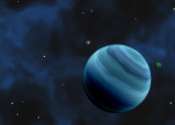Rocky exoplanets are even stranger than we thought
An astronomer from NSF's NOIRLab has teamed up with a geologist from California State University, Fresno, to make the first estimates of rock types that exist on planets orbiting nearby stars. After studying the chemical ...








